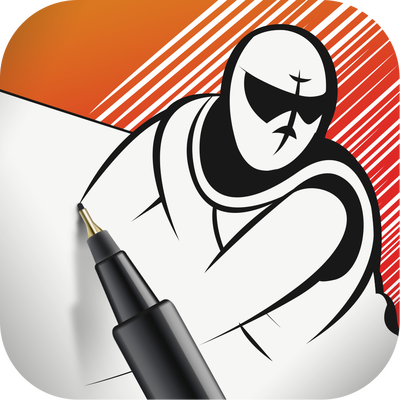|
The Khan Academy interviewed me as part of a special series covering the responsibilities, requirements, and financial aspects of different careers. I explained sequential art and talked about my responsibilities as creative director of Prime Vice Studios.
Series Bio:
Careers and Personal Finance on Khan Academy: Are you wondering how to land your dream job? How to pay off student loans? What’s the best way to negotiate your salary? Finding answers to questions like these can be hard, but we’re here to help. We ask real people in real jobs how they make it all work in our new video series about careers and personal finance, brought to you with support from Bank of America. Check out our career and personal finance videos on Better Money Habits, Bank of America's financial literacy website: https://bettermoneyhabits.bankofameri... About Khan Academy: Khan Academy is a nonprofit with a mission to provide a free, world-class education for anyone, anywhere. We believe learners of all ages should have unlimited access to free educational content they can master at their own pace. We use intelligent software, deep data analytics and intuitive user interfaces to help students and teachers around the world. Our resources cover preschool through early college education, including math, biology, chemistry, physics, economics, finance, history, grammar and more. We offer free personalized SAT test prep in partnership with the test developer, the College Board. Khan Academy has been translated into dozens of languages, and 100 million people use our platform worldwide every year. More free lessons at KhanAcademy.org And remember, you can learn anything. For free. For everyone. Forever. #YouCanLearnAnything Subscribe to Khan Academy’s Careers and Personal Finance channel: https://www.youtube.com/c/KACareersPe... Join us on Facebook or follow us on Twitter at @khanacademy.
0 Comments
The line of action is a tool to help cartoonists quickly determine the direction of their characters. It is the first mark you make to draw figures in life like action.
Starting with the line of action makes sure your drawing remains unified and flows
Start with a light & broad stroke then use darker & thinner lines to build up your drawing. It is usually better to build your drawings from general to specific. It allows to build from from a strong foundation.
Get a feel for the pose your about to draw. Think about what they are doing or how they are standing.
Think of the line of action as an arrow going from one point to another. It’s directional flow will dictate which way the character is facing and how they are taking up space. Build your figure upon the flow line to keep you figure in movement unified.
A quick review to build your figures. Please feel free to review these steps from previous posts by clicking their links.
1. Start with the stick figure 2. Make a mannequin 3. Add details
Eventually you will be automatically thinking in terms of action, direction & flow so your poses will naturally have them. You may even just start with how the the spine is moving and build from there.
The line of action is a traditional cartooning tool for capturing life in your comic characters. Aim for seeing your character’s as moving life-life creatures caught in the moment instead of statues locked into a fixed position.
Thank you for tuning into this week’s tutorial. I hope this has been helpful for you on your comic journeys. Check out the additional resources below for links to the reference material I use. Peace, Loso special thanks to our official sponsor Plasq for providing the invaluable app Comic Draw! follow on us social media! @Prime_Vice #primevice @AnanyaVahal @Plasq @ComicDrawApp #comicdraw #startyourcomictoday @ComicConnect Additional Resources
The Creators on the Come Up interview series highlights noteworthy emerging artists in the comics field.
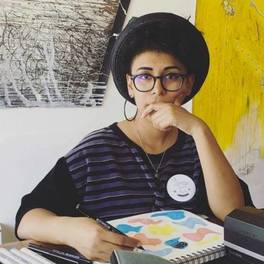
Breena Nuñez "Know that your time and imagination are in charge of reshaping culture and the way we see the world. " @Breenache https://www.etsy.com/shop/breenache Bio: Breena Nuñez is an Afrochapinaca weirdo from the Bay Area who likes to make comics, teach comics, and read comics. Questions: Where are your from? I usually say I'm from the Bay Area since my family and I moved around a lot during the 90's. My family first rooted themselves in San Francisco's Mission District after migrating from Guatemala and El Salvador. But now Oakland has been my new home for a little while now. Where did you grow up? Mostly South San Francisco and San Bruno, which is all South from San Francisco. How did your experiences affect your art? My personal experiences with being a nerdy Central American kid influences my drive to tell stories through comics, because I feel like there was still an unspoken wish I had to read more stories about what it meant to be Central American. I was also a very quiet and self-conscious child when it came to speaking up for myself because I was misdiagnosed with autism and was a part of the Special Education program for so many years. It really made me feel like I wasn't intelligent enough communicate with others, and I never questioned this system or my diagnosis because these "grown-ups" knew better, right? Well, the only two things that validated myself were comics and music. Those two forms of art made me feel like there was a life I could build for myself and to fully express my feelings because I'm not a very outspoken person, but I internalize so much that I need time to find a way to put it all in a comic or in a little song. You are also a musician. How does being multitalented & skilled affect your creativity and process? It feels like you are engaging with different parts of your brain and your body when you switch from playing music to making comics. It's actually pretty exciting that I don't have to just express myself in one medium because I crave excitement and joy in different forms of art. I feel like music at one point heavily influenced the way I experimented with my artwork whenever I studied Sun-Ra and Pharaoh Sanders, it really brought me to realize that they were really ahead of their time in Afrofuturism. Nowadays Afrofuturism is so present in comics and I feel like we owe it to black musicians for influencing the way we write and illustrate sci-fi comics. As far as carrying these two talents I still keep them separate since they both require different types of energy, and right now comics is getting a lot more attention while I sadly put music in a corner. Haha! But I think after graduate school I hope to make more time to play and experiment with these two mediums. Is your music also a component/ dimension of your comics? Hhmm, I don't think it really does at this moment. But there was a bigger relationship between music and comics when I made a short series of illustrations combining my love for music and comics titled Somos El Futuro. I honestly hope to get back into something like that because it drives me to study music more and to see how I can fuse these two pieces of myself together. You are currently a graduate student. What drove you to pursue a Masters degree? It's definitely because I craved to be in a place of learning where the focus is comics. At one point that felt silly of me to dream of a graduate program like that because we're so close to Silicon Valley and there's this pressure to work in big tech as some kind of graphic designer. But I knew deep down that I was not going to be happy in a tech company, I also just don't have the brain capacity to invest in new trends and new ways of designing stuff because I'd rather researching cartooning styles by watching Cartoon Network and reading zines made by my friends! At one point I thought about getting a Masters in Teaching Art since I want to be accessible to young black and brown kids who love comics. But something told me to say "no" to applying for teaching credentials or to a Masters in Teaching since I probably would not have enough time to work on myself as a cartoonist. It basically came down to me wanting to be more selfish with my time and to fully immerse myself in something that I am deeply passionate about. And I feel like I've found the right program where I'm still connected to my community while also learning some valuable lessons that I can pass onto kids who dream of being comic book artists. What type of stories do you like to make comics about? I like to make comics based off of stories I like to read which are autobiographical and humorous. My stories these days are about my reactions to racism I've encountered as a youth, anti-blackness in the Latino community, reclaiming blackness, and venting about anti-Central American sentiments from the Trump administration. Whats your process? Elaborate on how you work through your projects. How do you break up your time for your projects at different stages? For my shorter comics I sketch them out in four panels. I doodle an image first and then script out what I want to say in it before moving onto the next panel. I still struggle with pushing these little comics at a faster rate because I'm such a pensive person that I sometimes take a long time to write down something that I feel satisfied with. But when the mini comic is done I ink and letter everything by hand, I'll scan it and then add a color swatch through Photoshop. These would take me about a couple of hours or so. But for my thesis (which I want to turn into a graphic novel) has required a lot more writing and editing at the beginning. I took about one semester to finish editing the first chapter before moving onto my thumbnails. It was outside of my comfort zone but I appreciate scripting everything out because it gives me a better idea how the visuals are going to look like in my thumbs. Thumbnailing different scenes takes me about two weeks to feel good about them before moving onto the next scene. I'm also like juggling other commissions and tabling gigs so sometimes I have to prioritize other deadlines than my personal stuff, so my process is always in flux depending how busy life gets. What do you recommend to aspiring artists that you wish you had known much earlier? You, yourself as an artist and writer are valuable assets to society. We still live in a world that undervalues us as creative people of color, but that should not stop you from following your passion. Learn to be gentle with yourself when you make a mistake, it is all a part of the process too. Make friends with other artists and writers, they will advocate for you even when you feel alone. Know that your time and imagination are in charge of reshaping culture and the way we see the world. What do you love best about making comics? I love that comics are an accessible form of art and literature. You don't need to throw down so much money to access culture through an expensive museum when you can get comics that is relatively affordable through your local shop or a zine fest. Owning a comic actually feels like holding a museum in your hand wherever you go. What do you wish was different about the comics industry? I wish more publishing houses were more open to publishing stories that are by folks of color and didn't have to question whether or not their story is "going to make sense" to their fanbase. Language can be an issue people run into because sometimes folks fear that they are not going to understand the story. Well, as folks of color we're always in a place of not being understood because of who we are. But we need comics that have Spanglish, Tagalog, Vietnamese, etc. because that's another part of the history of the U.S. we don't always get to read about. Which books do you recommend artists should have in their reference library? Favorite instructional material? Hhhmmm, some artists that I've been studying for inspiration on cartooning style are Ben Passmore, Jeremy Sorese, Lamar Abrams, Liz Suburbia, and Clément Oubrerie. Scott McCloud's How To Make Comics have some really good tips on paneling and layout. Top 5 Favorite Artists? Jaime Hernandez, Liz Suburbia, Adrian Tomine, Jillian Tamaki, and Stephanie Gutierrez. Top Favorite Comic characters? Damn, these questions are getting harder, hahaha!! Hhmmm... definitely Maggie and Hopey from Love & Rockets, Henry from Catboy, then Aya and her hairstylist friend who dresses like Michael Jackson from Aya. Top 5 Favorite comics, graphic novels? 5+ I just started this biography of Josephine Baker, Aya: Love in Yop City, Uncomfortably Happily, Love & Rockets, The Interview, Bottomless Belly Button, and Killing and Dying. What type of work are you interested in doing? Now? In the future? What I'm interested in doing now is creating and experimenting with my comics while I'm still in grad school. My thesis is going to be a memoir comic that speaks about my experience of trying to understand what Central Americanism is and what reclaiming Afrolatinidad means to me. I currently am open to visiting classes to facilitate zine/comic book workshops to black and brown youth since I remember that educators of color have always made an impact in the way I value myself as an artist. In the near future I'm going to also push myself to make some comic strips about being an awkward Central American who doesn't always feel like they "fit in" to things that are expected of me like being mad fluent in Spanish, knowing how to eat pupusas properly, etc. Another comic I'm hoping to get back into is going to be a series called Dear Sentida and it's pretty much going to also poke fun at awkwardness while using cute animal character to talk about queerness and gender nonconforming identity. How can others find/ purchase your work? Website, social media link, etc Yeah, folks can definitely purchase my work through my Etsy store: https://www.etsy.com/shop/breenache But in case people don't have an Etsy account they can always email me at technicolormorena@gmail.com to purchase and inquire about commissions. I'm also pretty active on Instagram and it's my favorite platform to meet and be inspired by other artists @breenache.
Along with other significant change makers in the comics industry Loso Pérez had the honor to be a part of the Latinx Superheroes in Mainstream Comics: The Documentary which is based on the Eisner nominated book of the same name. It will be coming out Fall 2018
The Living Legends interview series highlights established and influential people in the comics industry.

Jiba Molei Anderson “Black is Beautiful” was more than a slogan growing up, it was and is a way of life. "Ultimately, I am in the practice of training warriors; young men and women who have a distinct point of view and the drive to accomplish their goals. Life is a competition and I am in the business of creating champions." www.griotenterprises.com Bio: Jiba Molei Anderson is the CEO of Griot Enterprises, a publishing company / visual communication studio and creator of its flagship property, The Horsemen. He is also the curator of 4 Pages 16 Bars: A Visual Mixtape, an anthology which focuses on independent works from creators of color and maintains The Afrosoul Chronicles, a blog about comics, pop culture, politics and race. Anderson has had numerous one-man and group shows, art directed and published over 12 books and has been invited to speak about his work and the representation of race and culture at various institutions including the School of the Art Institute of Chicago and the Ohio State University. The Horsemen: Divine Intervention and the anthology 4 Pages 16 Bars: A Visual Mixtape have been used as textbooks for classes at OSU. Anderson has been employed as a graphic designer, animator, art director and graphic novelist for entertainment and educational institutions such as Universal Music Group, the University of Illinois - Chicago, the Smithsonian National Museum of African Art and the Chicago Academy of Music including The Song of Lionogo: An Indian Ocean Mythological Remix for the Smithsonian National Museum of African Art (with Brightseed Collaborative). Currently, Mr. Anderson is employed as a Part – Time Lecturer at Chicago State University. Questions: Where are your from and where did you grow up? I was born and raised in Detroit, Michigan. My mother is from Liberia while my father is from the U.S. So, I am first-generation born in the States on my mother’s side… My birth was Pan-African in nature. How did your experiences affect your art? I grew up in an environment where it was the U.S. outside my window and Africa behind closed doors. I grew up with the traditions, the food, the politics, the music, the art, the strength and power of African culture, the endurance, tenacity, passion, creativity and drive of African American culture. “Black is Beautiful” was more than a slogan growing up, it was and is a way of life. I was extremely lucky to be born into a family of creative people on both sides. My father is an architect, my younger siblings are all professional creatives. Cousins, aunts and uncles are working creatives or artisans. Many of my family members are educators and some were political and historical figures including my mother’s father. On the flip side, the American side, my people are hard workers, hustlers and grinders who don’t let obstacles get in their way. They have the ability to make things happen through sheer determination and will. Because of this, I feel that I have a legacy to uphold while contributing to that legacy. I can never half-step when I create. My family are some of the coldest artists of all time, and I’m not saying that because we are blood-related. I learn from them, they learn from me. I am forever grateful for that. Why did you pursue a Masters degree? Initially, I pursued my MFA to get a better job… Dollar, dollar bill, y’all. I was working as an apprentice in a design studio and was not loving life at all. My dreams of moving to New York to work for either DC or Marvel didn’t materialize the way I envisioned (i.e. easily), and I was not feeling being the lowest man on the totem pole working for a dude that I felt could have been Cosmo Spacely’s little brother… With a ponytail. When I arrived at the School of the Art Institute of Chicago in 1995, comics were not the next major arts movement. They were looked down upon. I wanted to change that with my thesis project. I wanted to elevate the superhero, the Black superhero in particular, to a level of respect. I wanted to show the strength of graphic design that the medium offers. Little did I know that in grad school, I would create the property that is The Horsemen and plant the seeds for what would become 4 Pages 16 Bars: A Visual Mixtape. What type of stories do you like to make comics about? My work examines the root of the superhero, mythology, thereby taking an esoteric approach to the genre. Mythology allows me to craft a story of people with abilities that though they use those powers for good, they are still subjected to the same feelings and frustrations they we all have when it comes to living in these modern times. Whats your process? Elaborate on how you work through your projects. How do you break up your time for your projects at different stages? My process is simple: I create images and I write the stories. I feel that the materials are immaterial to the work that’s being created. By that I mean the materials used are just an extension of the creator’s vision. Now, with that pretentious bit of pseudo-esoteric philosophy said, I’ve been in a slow transition, kicking and screaming, to a fully digital process. It’s neither quicker nor easier than working with the “analog” materials of pen, paper and paint. It allows for last-minutes edits to be made. It makes it somewhat easier to appease a client’s wishes. But, I do miss mastering the classic materials of illustration. What I’ve learned is that at the end of the day, my process is my process. Every artist’s process is unique to them. I think a more appropriate question is: “How do you handle a deadline.” And even then the answer is simple: Get the work done. If this is indeed your gig and you are getting paid from it, then get the work done. Develop the discipline to complete projects, especially with your own projects. What is your approach to teaching? My teaching philosophy is this: Teaching is a 50/50 proposition. It is the duty of the teacher to instruct, to guide and to mentor the student in the pursuit of their goals. It is the job of the student to receive and disseminate the information given and to take responsibility to further their education through their own personal application and continued pursuit of knowledge. I believe that the best teachers are the ones who are actively working in their field. It gives the student the opportunity of learning more than just the theories and techniques of their chosen profession. The working teacher also gives insight into the practical application of the student’s chosen field of study. Ultimately, I am in the practice of training warriors; young men and women who have a distinct point of view and the drive to accomplish their goals. Life is a competition and I am in the business of creating champions. Who should/ shouldn’t pursue a career in comics? If you are looking to get rich from doing comics, get out… Right now. It’s the straight-up lottery. It’s exactly like any career in the arts. Some become millionaires, some become paupers. The most successful artists are the ones who have figured out how to put a roof over their heads, food in their belly and make sure their family is good doing what they love to do. What do you recommend to aspiring artists that you wish you had known much earlier? Stick to your guns, learn the craft, figure out your lane in this game and rock it ‘til the wheels fall off. Everyone is influenced by someone, just don’t become a slave to your influence (looking at some of you “manga” artists). Don’t bite off of anyone else’s style, develop your own. There will be good days and bad days so you better love what you do because that will get you through the bad days. You only fail when you give up. What do you love best about making comics? I like telling stories and I like making art. Comics allow me to do both. What do you wish was different about the comics industry?
Oh, but wait… I’m an independent creator. And in the independent sphere, everything that I wish was happening at the larger companies are happening now in the indie scene. So, that’s where I am going to concentrate my energy. I’m going to do my part to grow the indie scene, especially Black Comix. Which books do you recommend artists should have in their reference library? Every artist and creator should have these three books as the foundation of their library: How To Draw Comics the Marvel Way by Stan Lee and John Buscema Understanding Comics by Scott McCloud Comics and Sequential Art by Will Eisner Also, every artist should get a Pinterest account. It is an invaluable for reference.
Top 5 Favorite Artists?
My Top 5 all-time are: Jose-Luis Garcia Lopez George Perez Steve Rude Brian Stelfreeze Walter Simonson Top Favorite Comic characters? 5+ Eshu (The Horsemen) Obatala (The Horsemen) Ogun (The Horsemen) Oshun (The Horsemen) Oya (The Horsemen) Shango (The Horsemen) Yemaya (The Horsemen) Black Panther Velvet Templeton (Velvet) The Batman Top Favorite comics, graphic novels? 5+ I really don’t have any favorites. I have too many good books in my collection to just settle on 5 because that may change based on my mood, the weather, what I ate for lunch, etc. I really just like well-crafted projects. What type of work are you interested in doing? The work that I’m doing now. How can others find your work? Website, social media link, etc www.griotenterprises.com www.jazintellec8.wixsite.com/jibamoleianderson www.gofundme.com/GriotEnterprises Griot Enterprises Titles
|
|
|
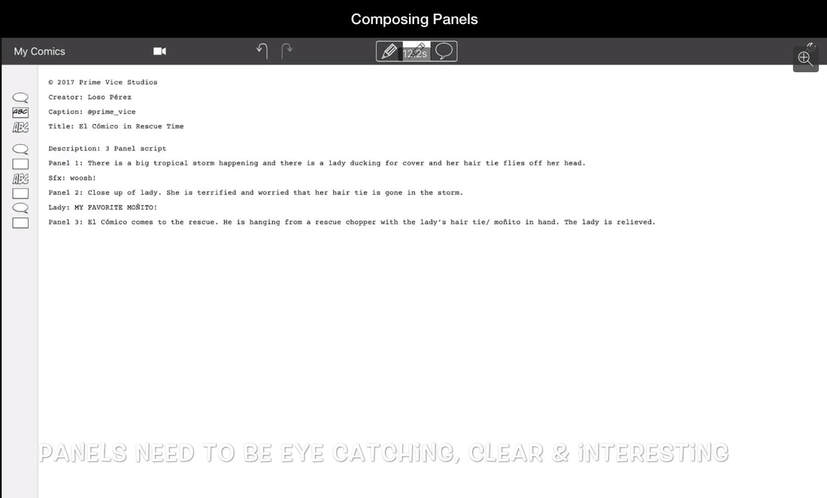
I setup the scene with an establishing shot showing the storm, the lady and her hair tie flying away.
Composition is where your personal storytelling skills come into play. You can take a group of artists and hand them the same script yet each and every one of them will tell the exact same story in a totally different way. The same goal is still kept in mind:
Keep your reader engaged through clear & interesting art and camera angles.
The trick in sequential art is to compose your panels in a way that each play off of each other and make all elements fit together well. You can have one really good panel that you’ve labored over but if it isn’t in harmony with the others or the elements are impeding on each other then it doesn’t work for the storytelling. Make your art impactful with smooth eye flow so the reader doesn’t get taken out of the story.
Thank you for tuning into this week’s tutorial. I hope this has been helpful for you on your comic journeys. Feel free to try your hand at the script below. I’d love to see what you come up with!
Check out the additional resources below for links to the reference material I use.
Peace,
Loso
special thanks to our official sponsor Plasq for providing the invaluable app Comic Draw!
follow on us social media!
@Prime_Vice #primevice
@AnanyaVahal
@Plasq
@ComicDrawApp #comicdraw #startyourcomictoday
@ComicConnect
Additional Resources
Archives
November 2023
September 2023
August 2023
July 2023
June 2023
May 2023
April 2023
December 2022
March 2021
October 2020
September 2020
May 2020
April 2020
March 2020
July 2019
June 2019
May 2019
December 2018
November 2018
September 2018
August 2018
July 2018
June 2018
May 2018
April 2018
March 2018
February 2018
January 2018
December 2017
November 2017
Categories
All
#Bamruary
Clokas
Comics
Conventions
Creator’s Corner
Creators On The Come Up
El Cómico
Interviews
Live Art
Living Legends
Panel Discussions
Press
Prime Vice Comics
Projects
#PVSketch
Resources
Saint Love City Funk
Special Events
The Seqa Dojo
Tutorials
Workshops

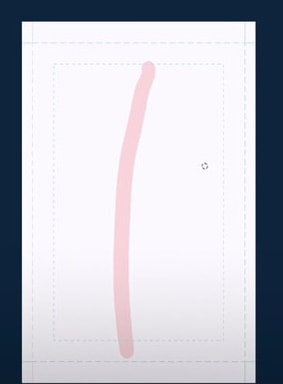


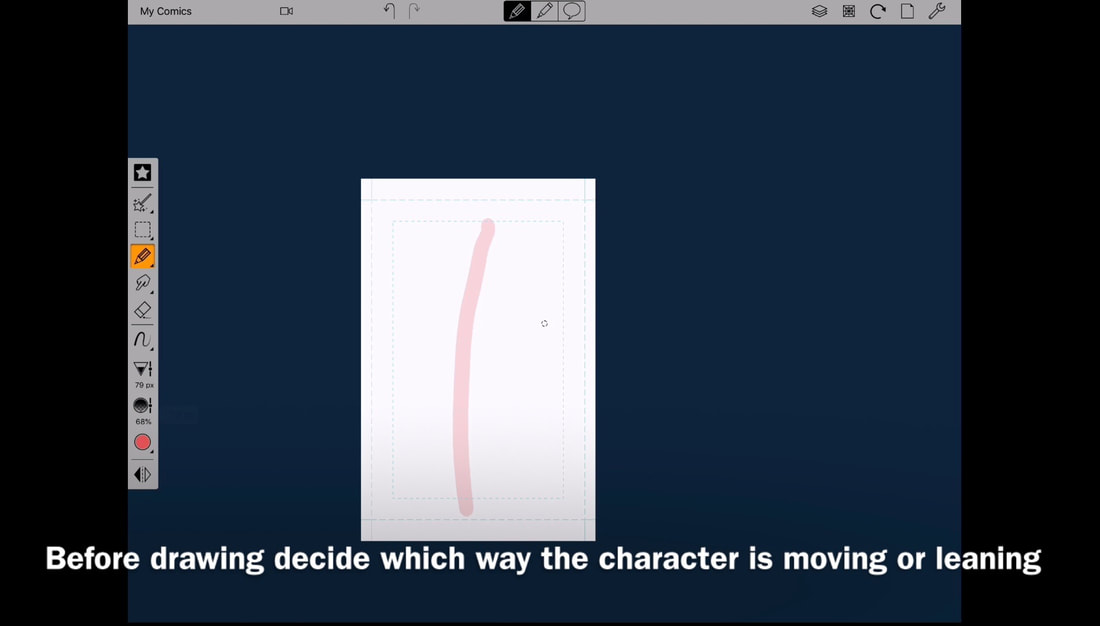







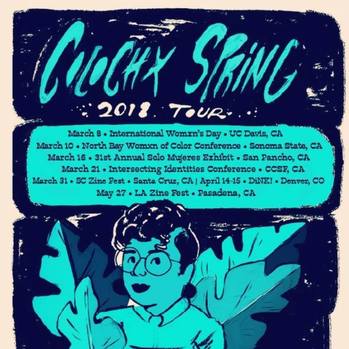











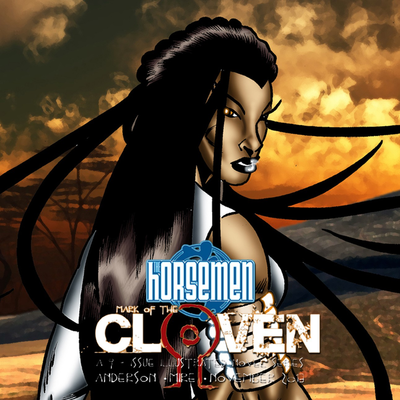



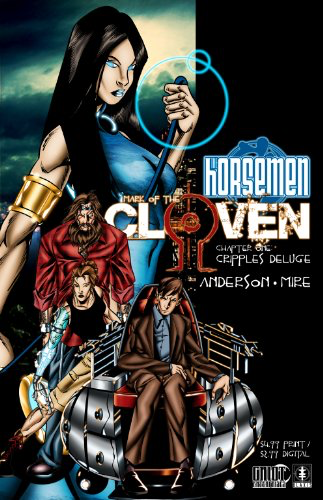






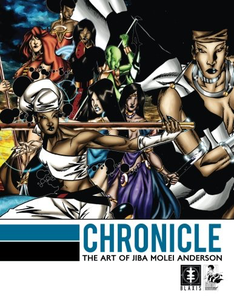




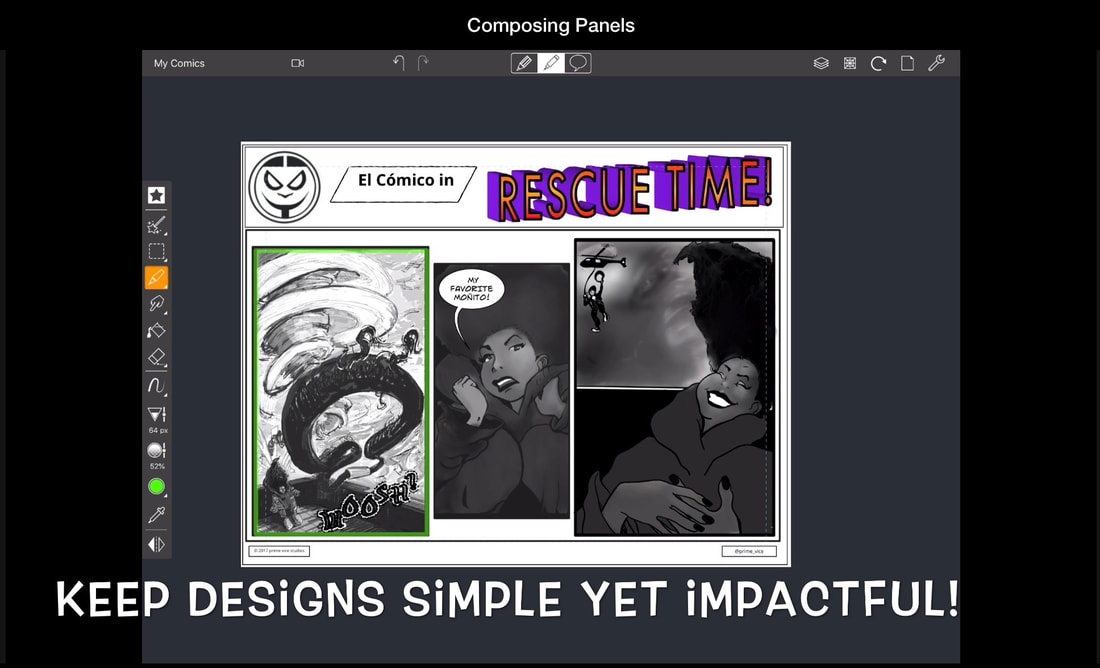




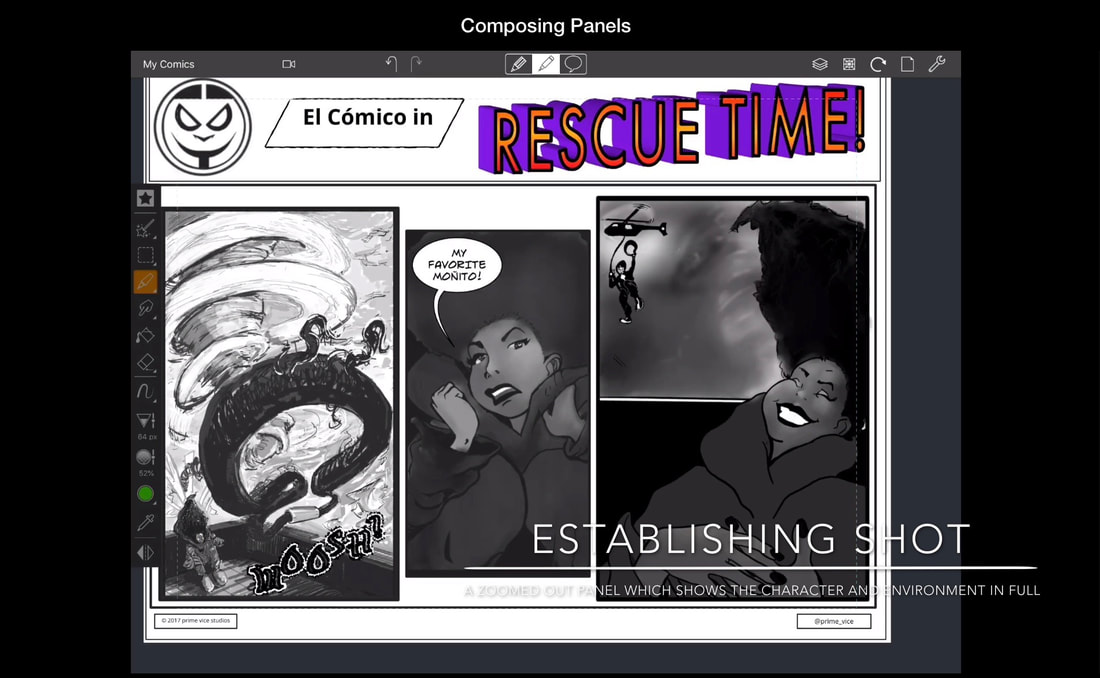




 RSS Feed
RSS Feed
